This unit standard introduces ethics in a business environment and focuses on ethics and the learner.
This unit standard introduces ethics in a business environment and focuses on ethics and the learner. The qualifying learner can reflect on their values and belief systems and how they influence their behaviour. Discussing how an individual’s ethics impact the people around him/her. Explaining how an individual can behave ethically in a business context. Demonstrate techniques for dealing with situations where own values and ethics conflict with work practice.
Course Content
- The concepts of values, belief systems, and ethics are explained with examples
- The source(s) of values and belief systems are identified, and an indication is given of how an individual’s ethics and values affect behavior
- Ways in which an individual may change his/her belief or value system are identified with examples
- Ways in which an individual’s ethics impact on behaviour and interpersonal relationships are indicated with examples
- The impact of personal ethics on the use of language is explained with examples
- The importance of respecting confidentiality is explained in its own context
- Ways in which an individual can influence the behaviour of others are identified and an indication is given of how this can impact on ethical conduct
- The concept of ethical business practice is explained with examples
- Adherence to company policy and confidentiality are discussed in terms of ethical conduct
- Ethical ways of receiving and giving gifts and favours in a business context are discussed with reference to an organisation’s code of conduct
- The importance of honesty in business dealings is explained with examples
- The deliverables in your own work situation are identified and an indication is given of the importance of productivity, accountability, attendance, and delivery of work on time
- Methods for dealing with unethical behaviour are demonstrated for three different situations
- Methods of dealing with unethical business conduct are demonstrated for three scenarios
- Own values and beliefs are compared to company practice and an indication is given of how an employee can deal with a situation where there is a conflict of an ethical nature
- Ways of dealing with instances where an employee’s rights are undermined are demonstrated for three case studies
- Non-accredited: Short course only
- Duration: 1h 30m
- Delivery: Classroom/Online/Blended
- Access Period: 12 Months

Project planning is part of project management, which relates to the use of schedules such as Gantt charts to plan and subsequently report progress, within the project environment. Initially, the project scope is defined and the appropriate methods for completing the project are determined. Following this step, the duration for the various tasks, necessary to complete the work, is listed and grouped into a work breakdown structure. Project planning is often used to organise different areas of a project, including project plans, workloads and the management of teams and individuals. The logical dependencies between tasks are defined using an activity network diagram that enables the identification of the critical path. Project planning is inherently uncertain as it must be done before the project is actually started. Therefore the duration of the tasks is often estimated through a weighted average of optimistic, normal and pessimistic cases. The critical chain method adds buffers in the planning to anticipate potential delays in project execution. Float or slack time in the schedule can be calculated using project management software. The necessary resources can then be estimated and costs for each activity can be allocated to each resource, giving the total project cost. At this stage, the project schedule may be optimised to achieve the appropriate balance between resource usage and project duration to comply with the project objectives. Once established and agreed upon, the project schedule becomes what is known as the baseline schedule. Progress will be measured against the baseline schedule throughout the life of the project. Analyzing progress compared to the baseline schedule is known as, earned value management.

